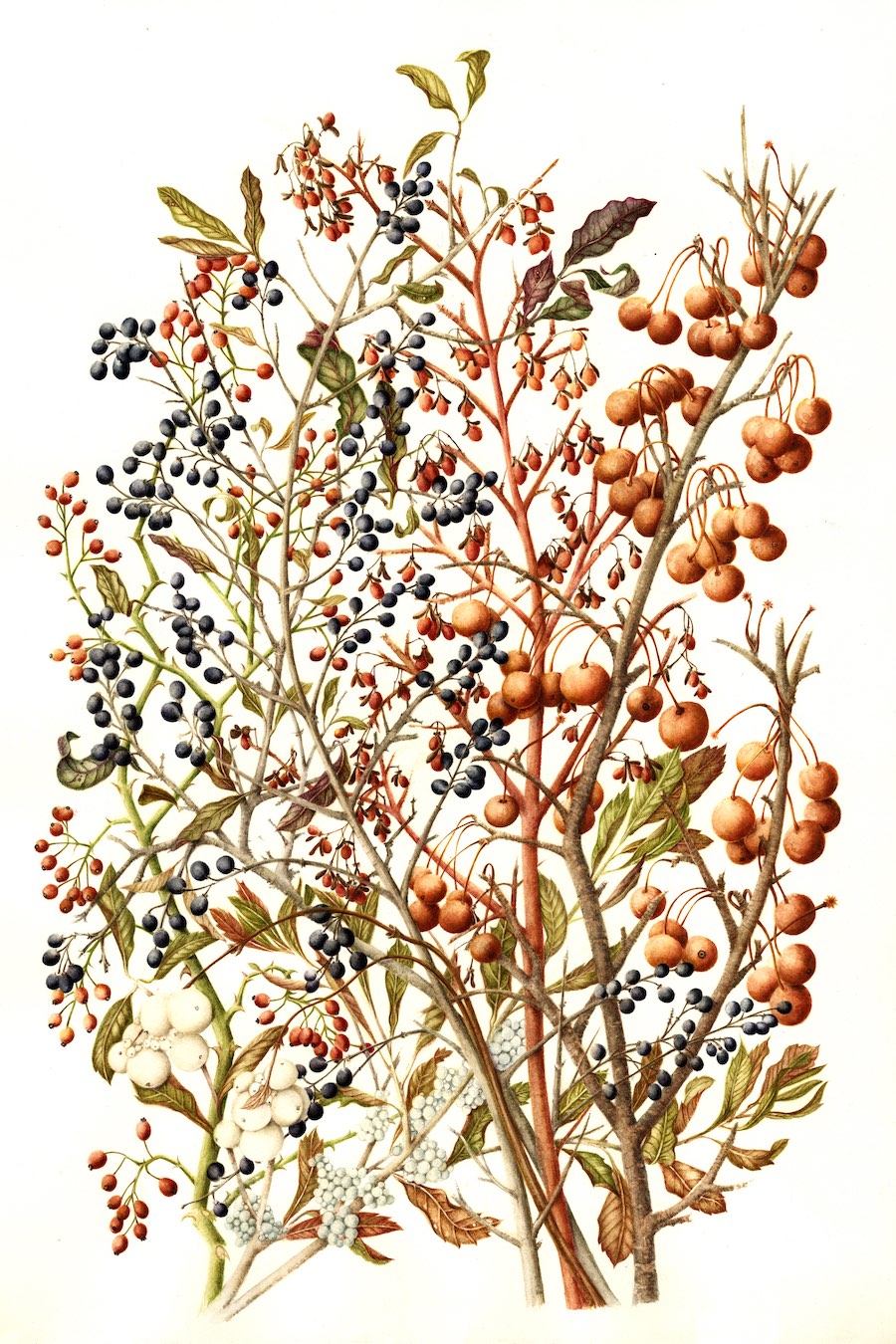
Multiflora rose (Rosa multiflora), Amur privet (Ligustrum obtusifolium) and Siberian crabapple (Malus baccata)
2018

Multiflora rose (Rosa multiflora), Amur privet (Ligustrum obtusifolium) and Siberian crabapple (Malus baccata)
2018
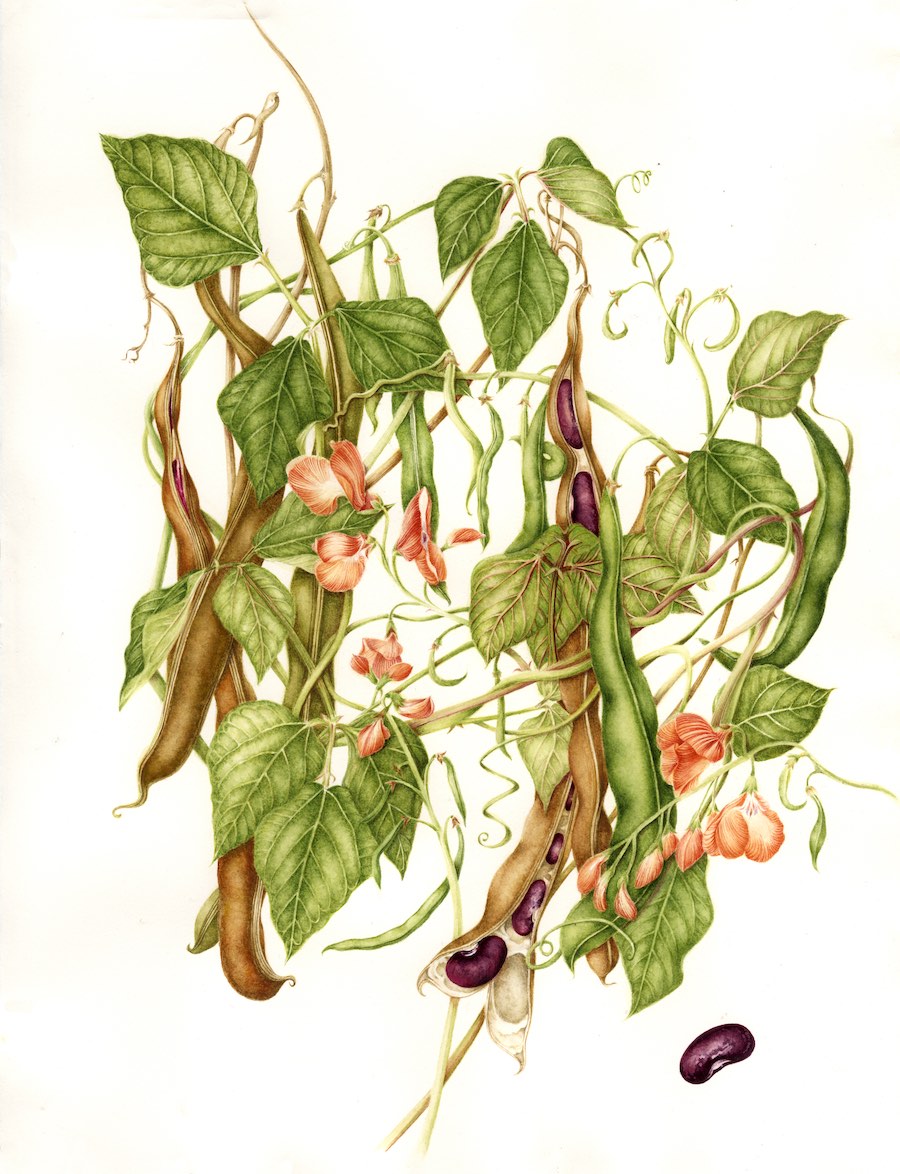
Scarlet Runner Bean
2018
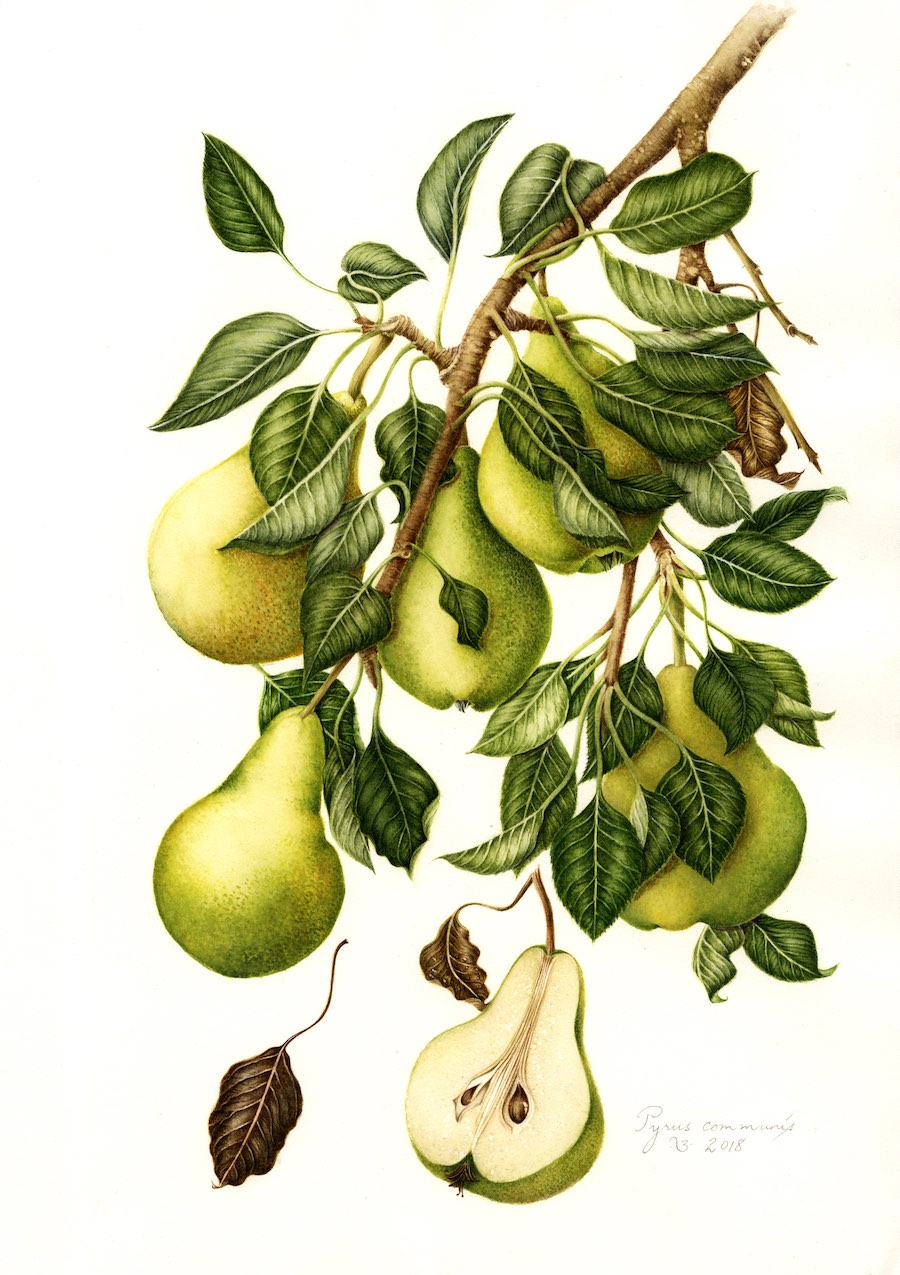
Pears
9″ x 14″, 2018
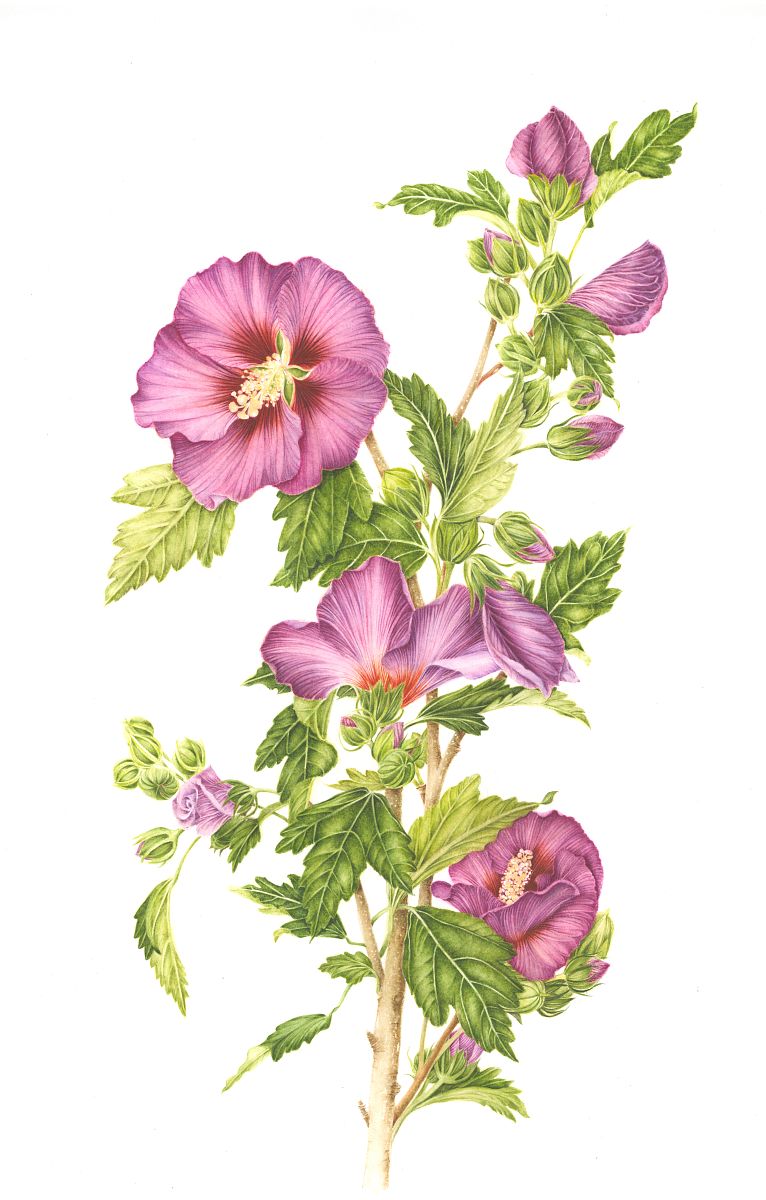
Rose of Sharon
17″ x 9″, 2017
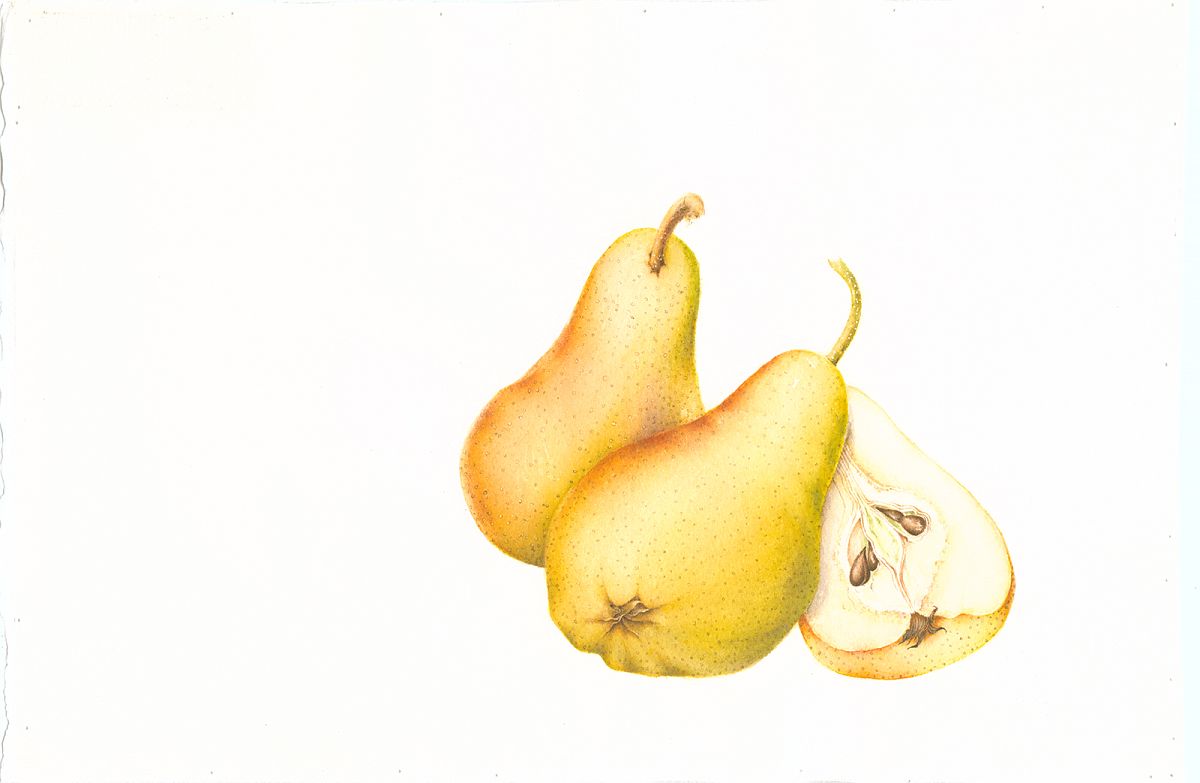
Pears
9″ x 7″, 2017
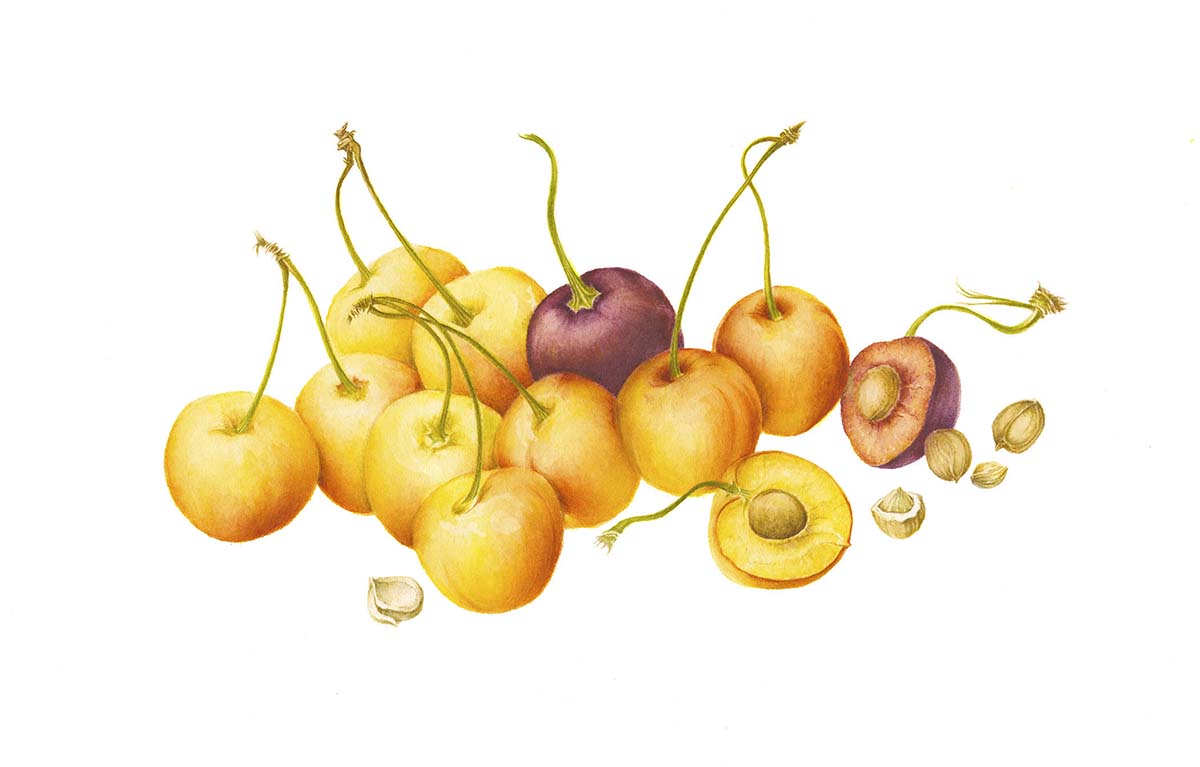
Rainier cherry
9″ x 6″, 2017
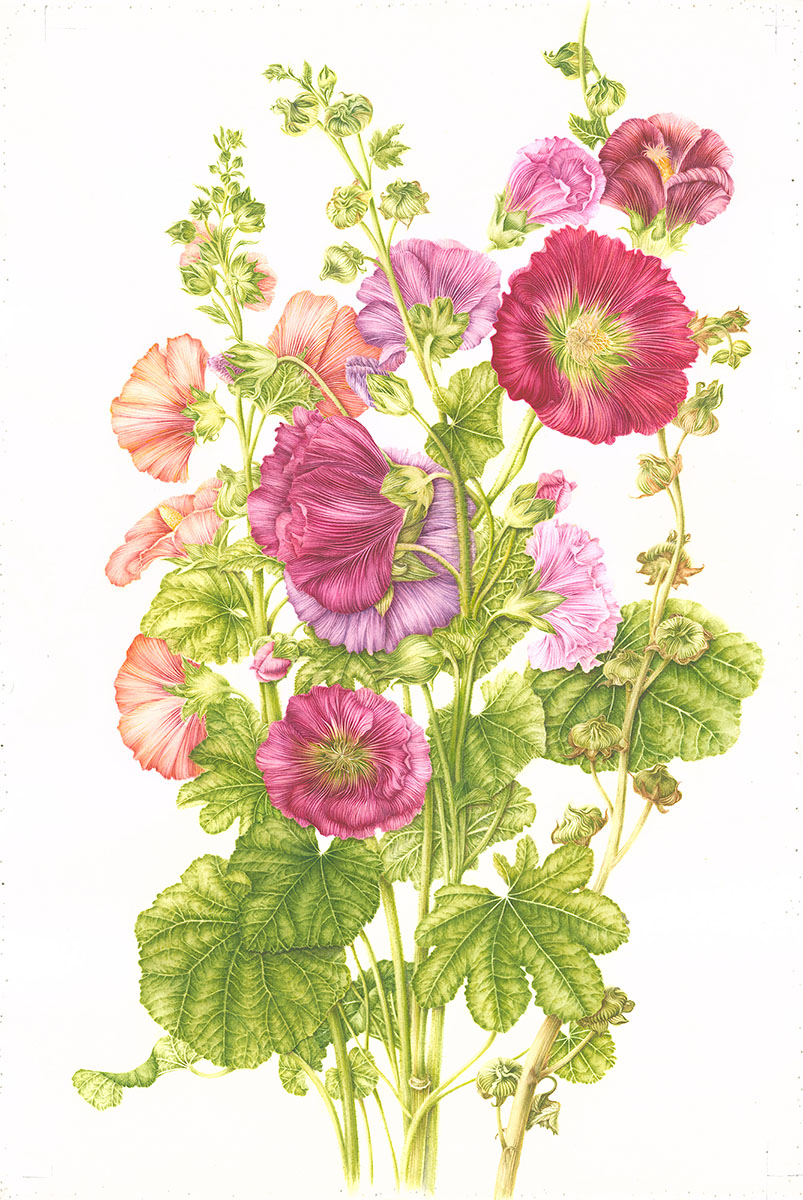
Hollyhocks
21″ x 12″, 2016
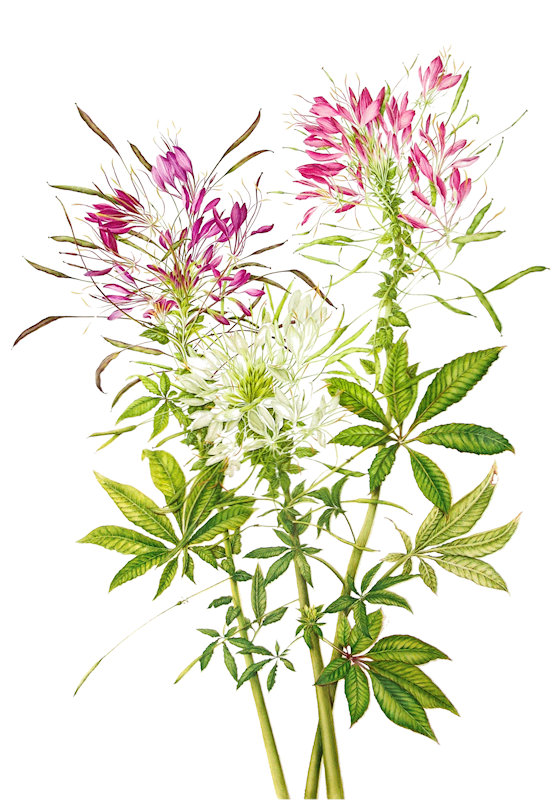
2015
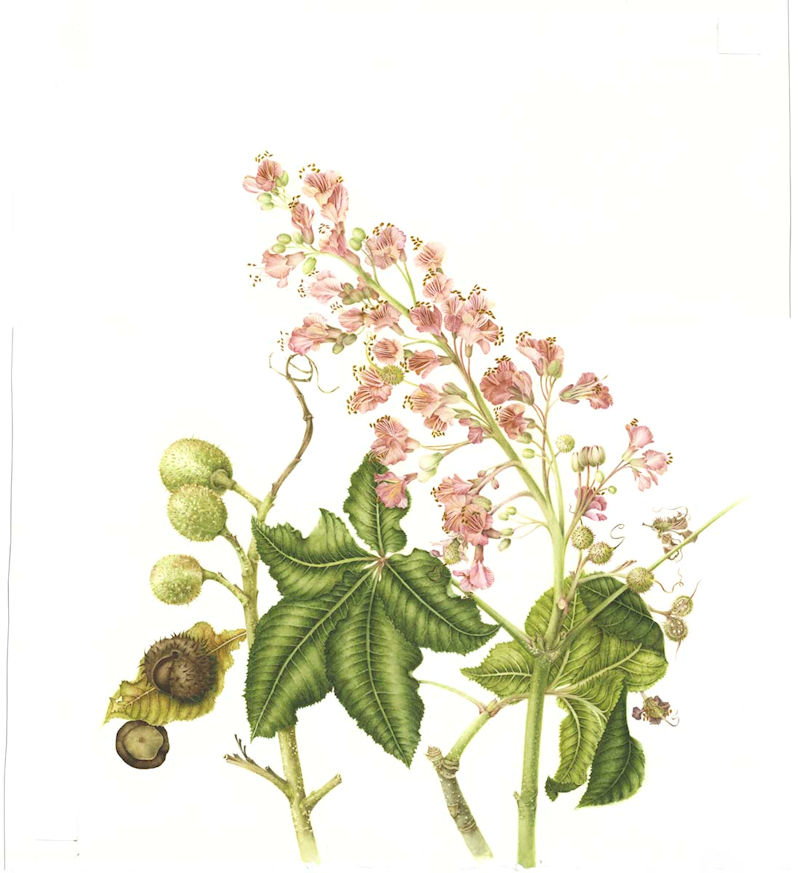
Pink horse chestnut/buckeye
12″ x 17″, 2015
My trudge to town takes me down a path lined with some majestic old catalpas, maples, stately oaks and a couple of younger horse chestnut trees. In the late spring the tips of the branches are covered with small pink flowers clustered in panicles, resembling a candelabra. Like the bees, birds, bugs and other pollinators, I too am lured by the color and profusion of the delicate blooms, contrasting so sharply with the dark green of the enormous leaves which surround them.
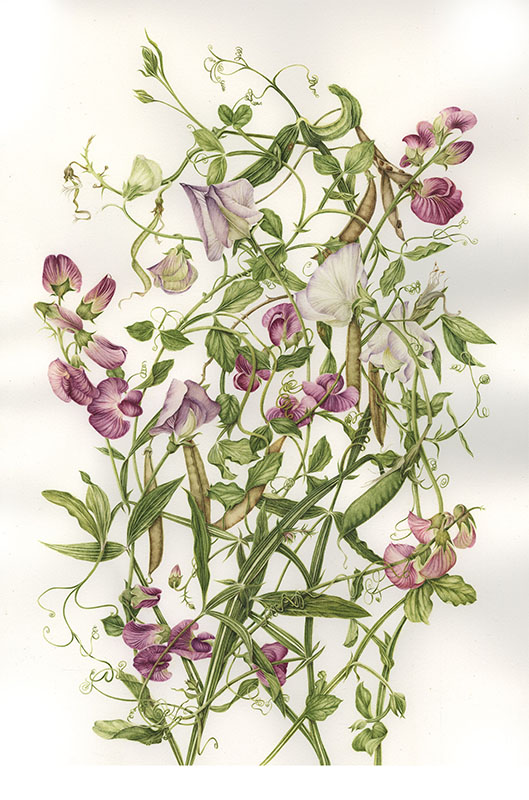
Sweetpea
2014
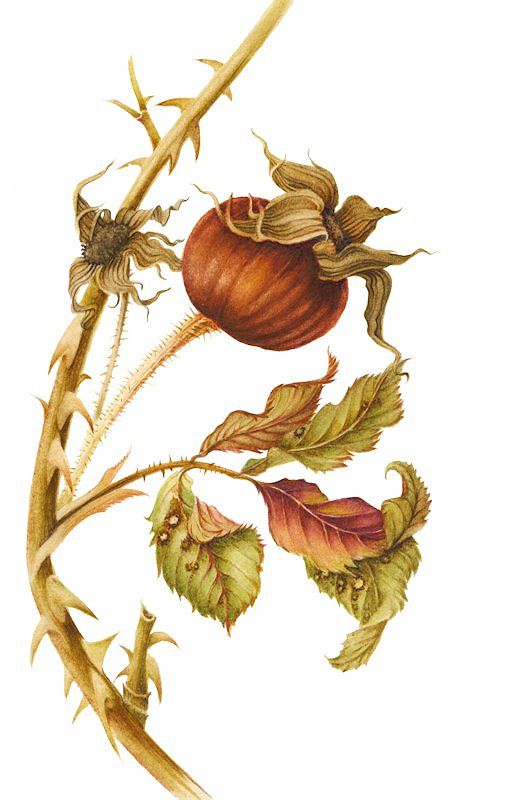
Rose hips
Image size 5½” x 3½”, 2014
Prints available
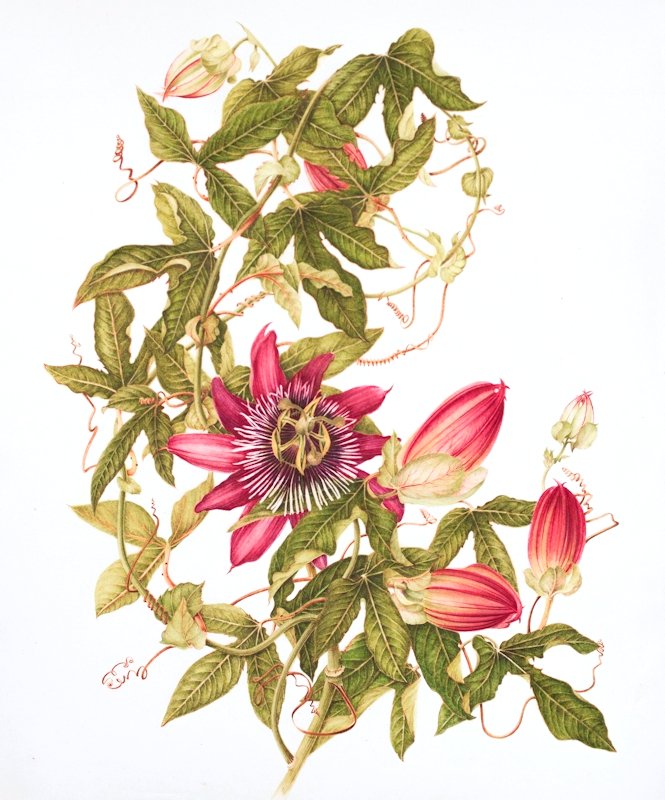
Purple passionflower
2014
10″ x 14″
Prints available
Passionflowers had been on my wish-list for years but the quest for the plant in our local nurseries summer after summer proved futile. After three years when I’d quite given up I spotted a woman wearing a passionflower in her hair & learned she grows numerous varieties of passiflora—she is passionately fond of them. Was that my lucky day!
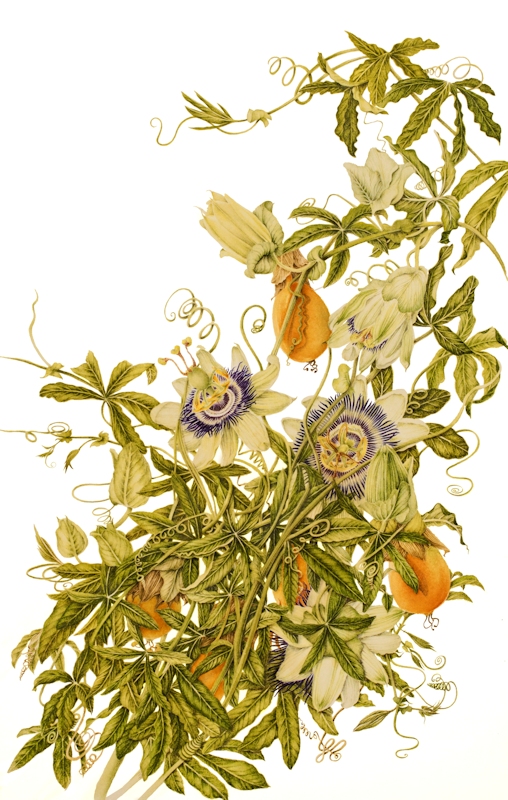
Blue passionflower
2013
10″ x 14″
Prints available
This painting, the blue passionflower, has a companion piece, Passiflora violacea , the purple passionflower.
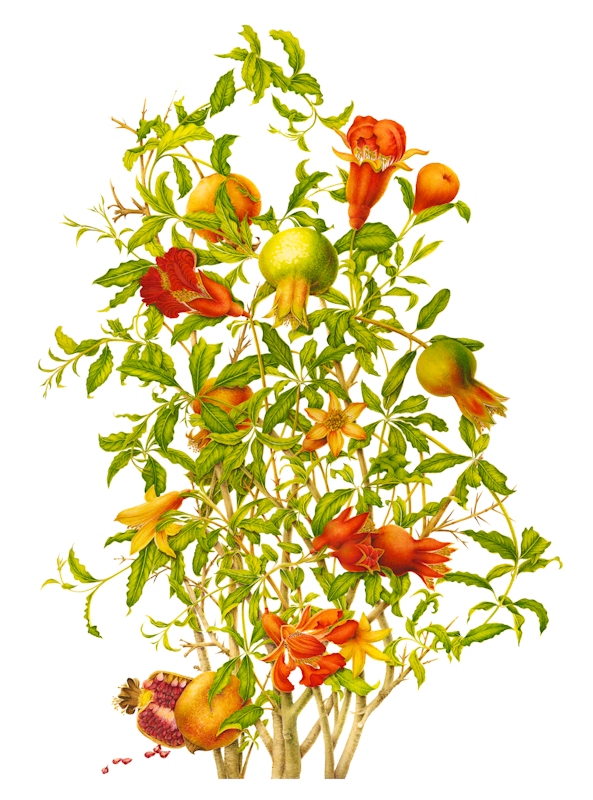
Prints available
2013
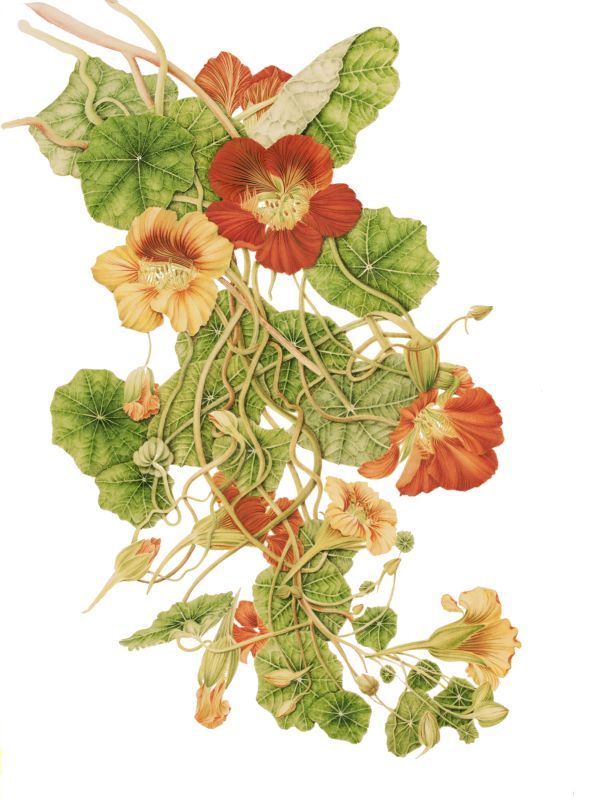
Nasturtium
2013
Prints available
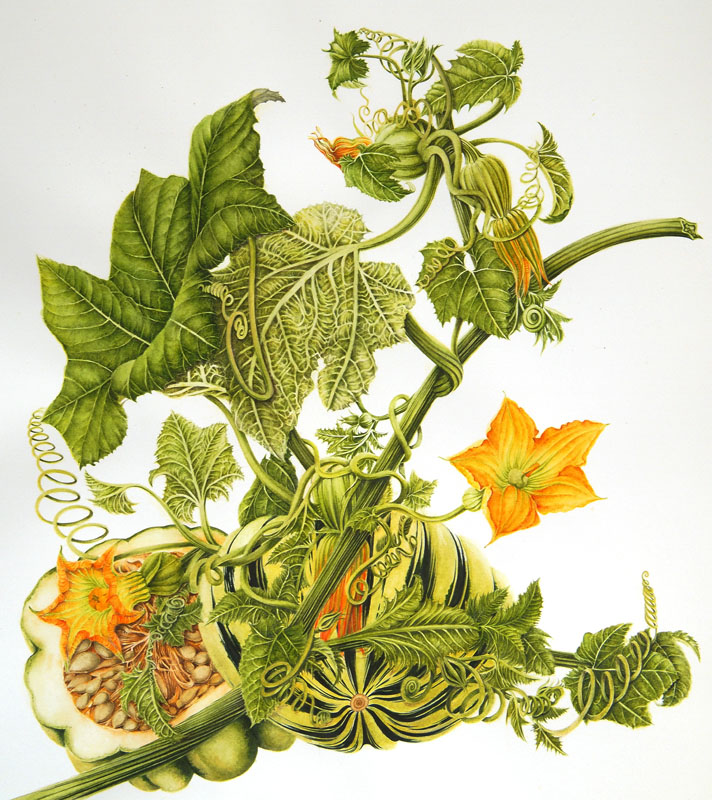
Summer squash, var. sweet dumpling
14″ x 15½”, 2011
Prints available
A gaudy splash of yellow by the compost heap drew my notice one midsummer morning. I was recovering from a cranial aneurysm which had impaired vision in my left eye so I mystified by that flamboyant color. Upon investigation it proved to be a valiant cucurbita pepo. Thriving undisturbed with its brilliant chrome blossoms, springy tendrils, voluptuous young fruit, massive leaves—all attached to sturdy stems—it commanded me in no uncertain terms: You’ve GOTTA paint us! And dutifully I obeyed.
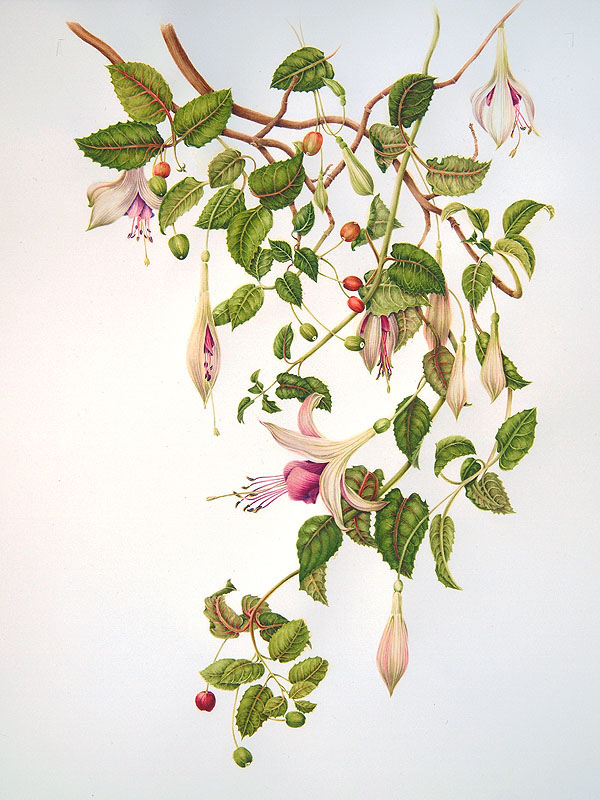
2011
Prints available
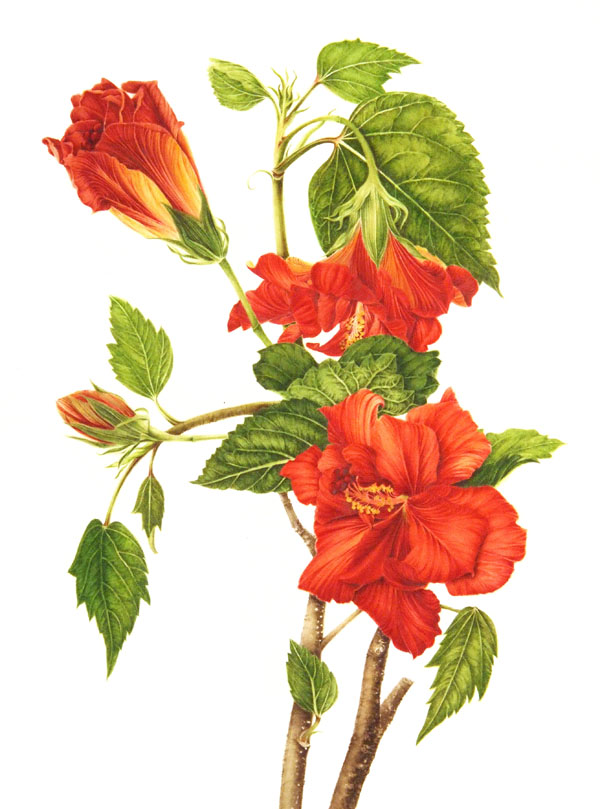
SOLD
2010
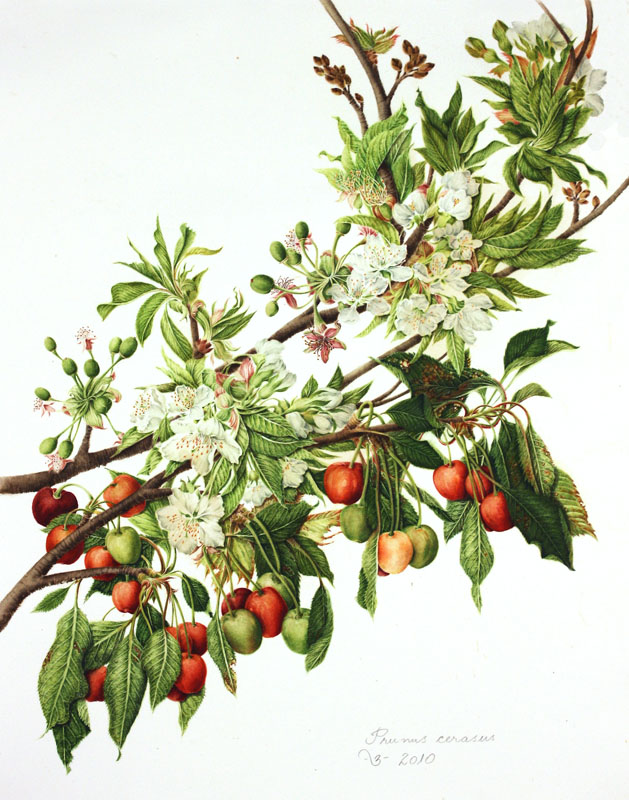
SOLD
2010
Prints available
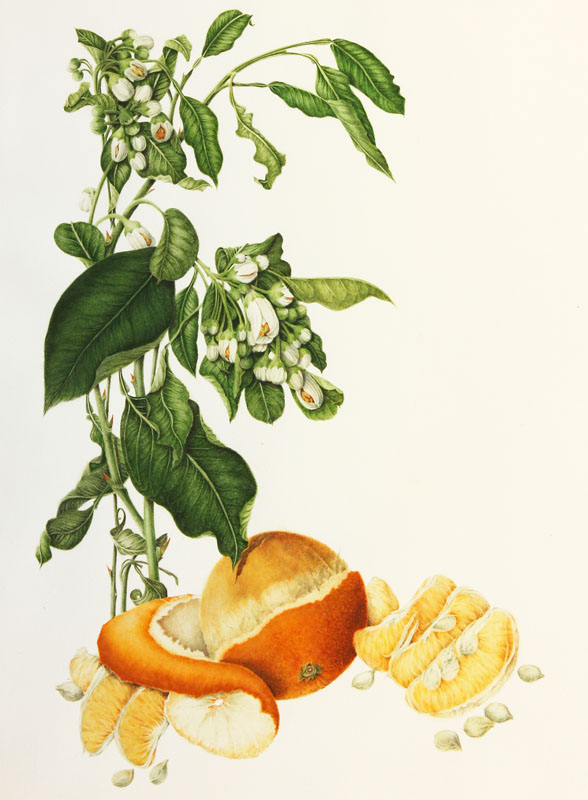
Valencia orange
Prints available
Mention “orange” and you instantly conjure up a host of associations—brilliant colors, a fresh, clean scent and a juicy explosion of tart, sweet, tangy flavors.
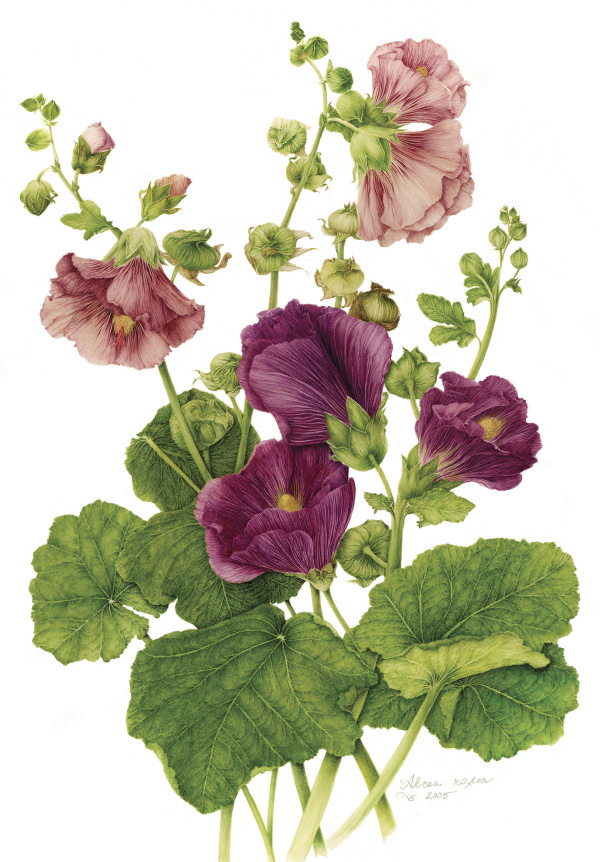
SOLD
2005
Prints available
Hollyhocks evoke within me a deep nostalgia for the balmy sunlit winter gardens of my childhood in northern India. Their spires enclosed a sequestered nook, towering protectively over the riot of color provided by larkspur and cosmos, salvia and cineraria, pansies, nasturtiums and candytuft in their orderly flowerbeds. Long, lazy afternoons were spent reading or playing scrabble while the dogs chased each other on the grass.
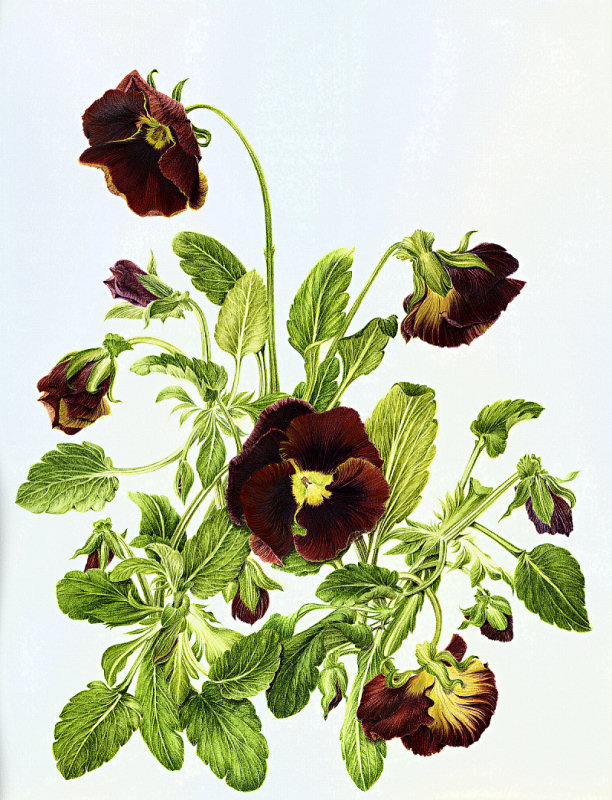
SOLD
Prints available
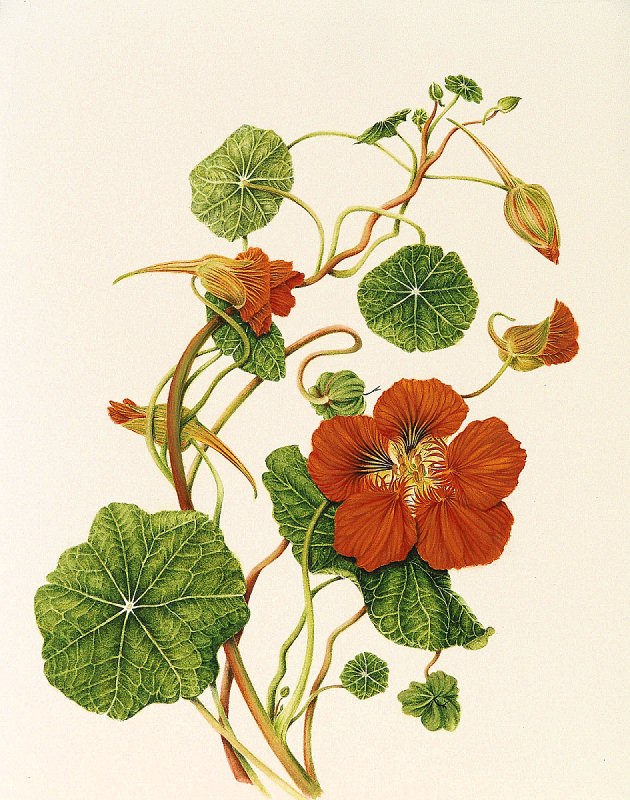
Nasturtium
To Linnaeus, the venerable giver of plant names, the broad circular leaves suggested battle-shields and the the flowers reminded him of helmets stained with blood. From the Latin for trophy, Tropaeolum, the plant derived its name. Its resemblace to the peppery taste and flavor of watercress, which actually belongs to the genus Nasturtium, Latin for pungency, led to its other name—Indian cress.
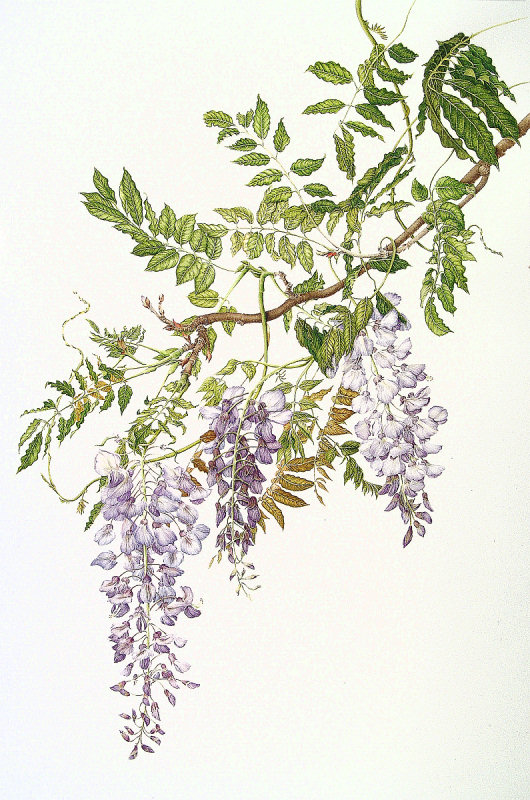
Chinese Wisteria
SOLD
Prints available
Originally called Glycinia, after the Greek “glykys” for sweet, renowned American naturalist Thomas Nuttall renamed the wisteria in the 1800s to honor Dr. Caspar Wistar (1761 – 1818), a professor of anatomy at the University of Pennsylvania, President of the American Philosophical Society, and a personal friend of Thomas Jefferson.
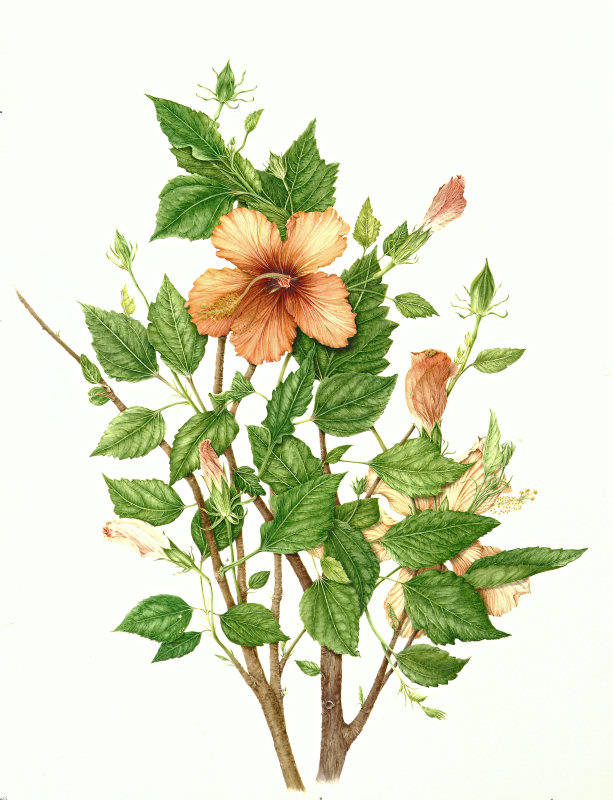
SOLD
Prints available
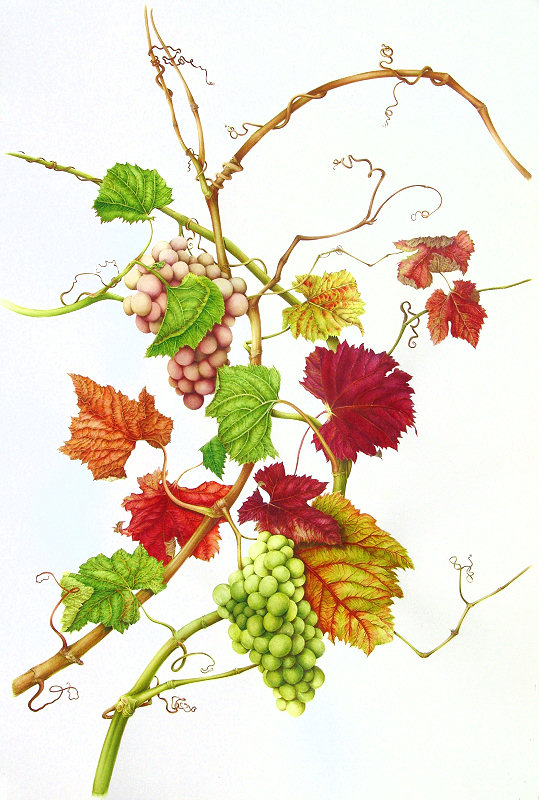
SOLD
Prints available
Wild grapes are found all over the world but viniculture probably originated in Mesopotamia, spreading to temperate zones in the west and north with well-drained soil. Ancient Egyptians, Greeks and Romans all treasured the grapevine, experimenting with and developing skills for wine-making. Ancient burial sites, most famously the tomb of Tutankhamun, housed several amphorae labeled with vintage, variety and the vintner’s name — testimony to the high esteem of both product and the skill of the artisan.
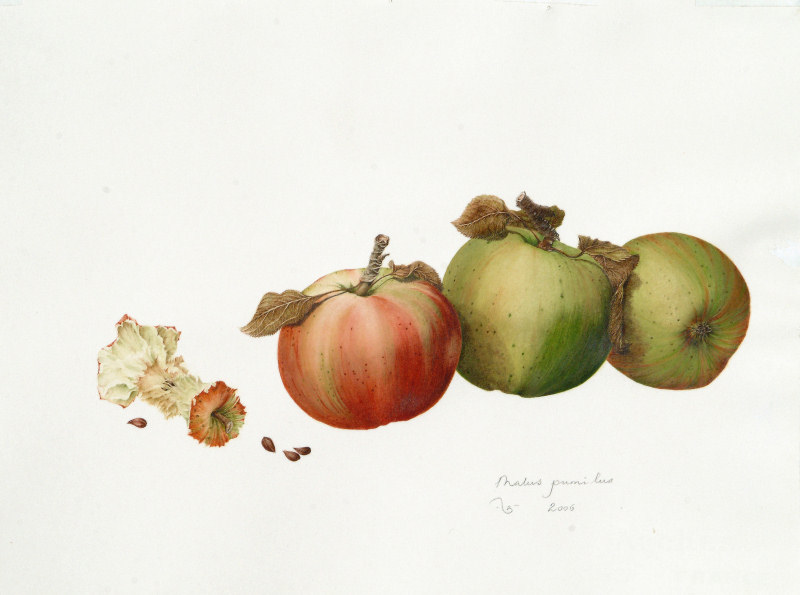
2006
Atalanta, the warrior huntress of Greek mythology, was the swiftest mortal of her time. When her father insisted upon her taking a husband she was distraught because she had been warned by the Delphic oracle against marriage. So she laid a condition. Any suitor must win her in a footrace or else forfeit his life, and so many an unfortunate died as a consequence.
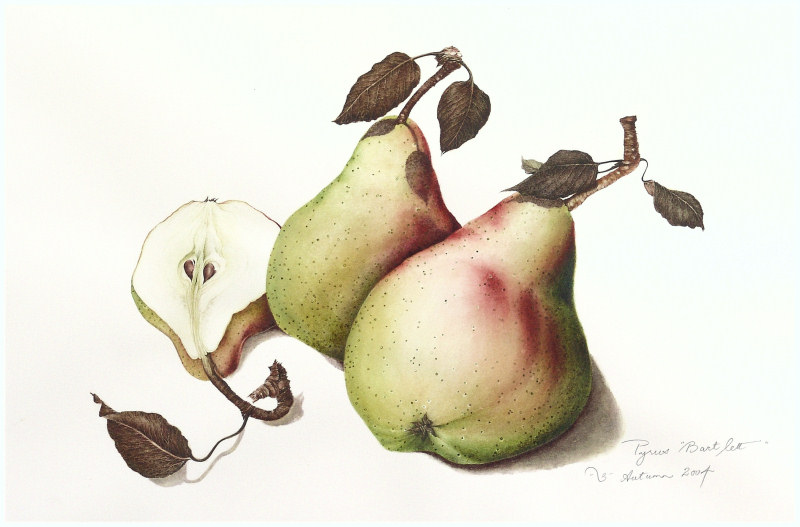
Bartlett pear
SOLD
2004
The image that instantly comes to mind at the mention of a pear is a distinctive shape, color and scent — the familiar contours of a gold-green Bartlett. Many varieties of pear trees are native to parts of Asia and Europe, but how and when did the Bartlett come by its name and earn its popularity in the new world? It’s quite a story!
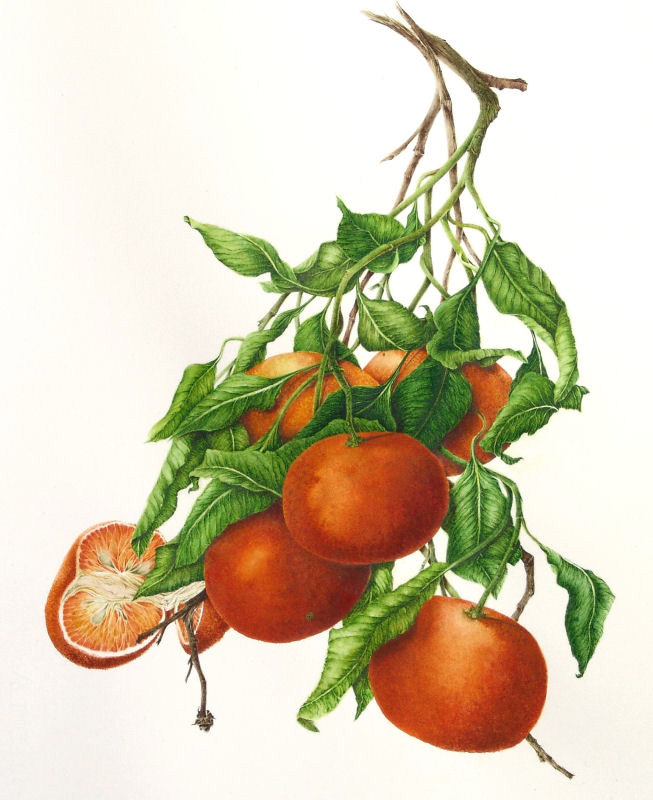
SOLD
v. Tangeriana
Prints available
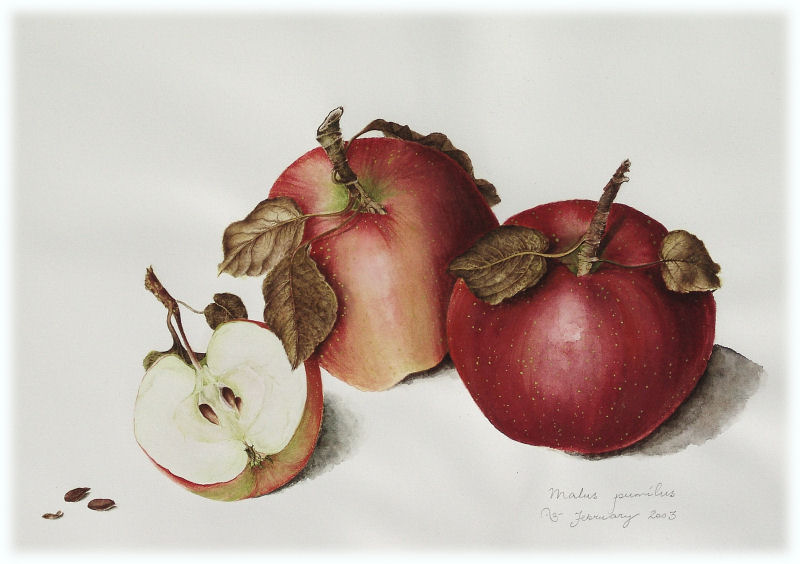
Apple
SOLD
2003
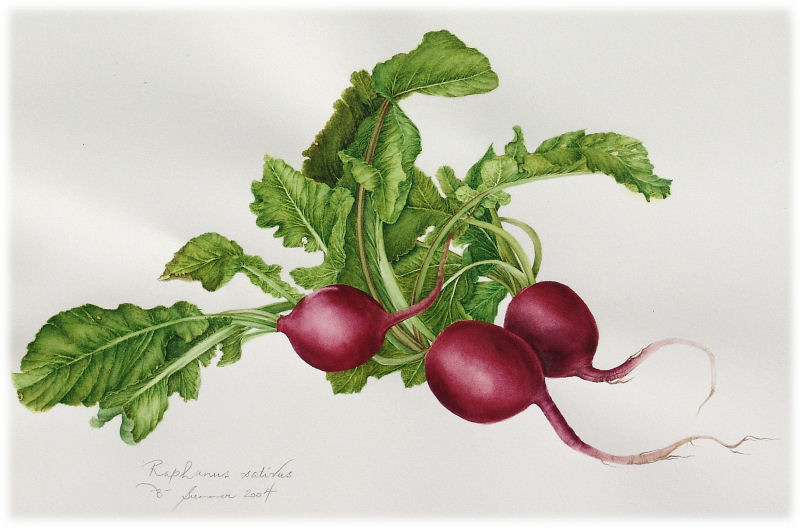
Radish
2004
SOLD
Prints available
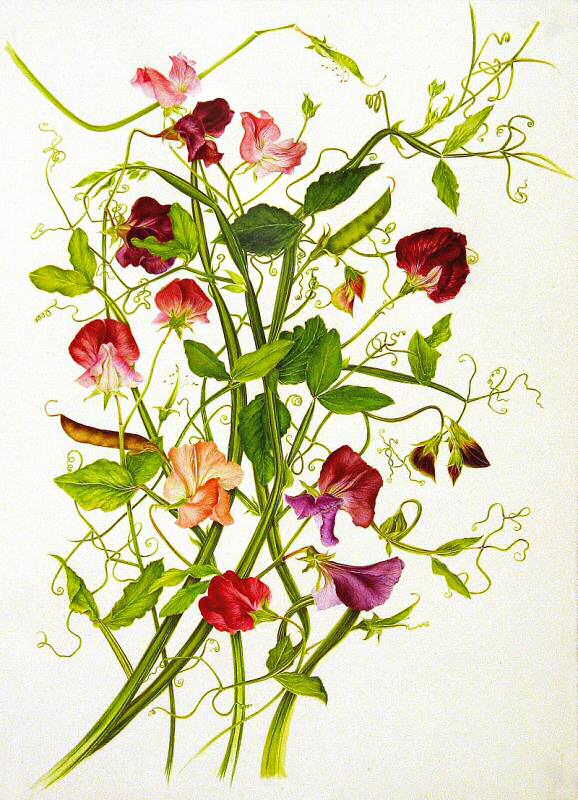
SOLD
Sweet pea